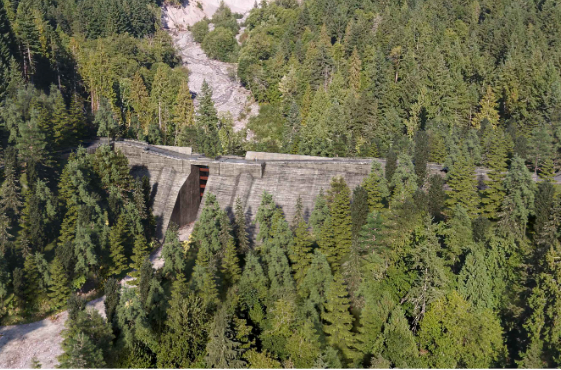Several rezoning conditions are still in the works for the Cheekye Fan debris barrier, but no set date has been given for when they may be met.
At a March 19 committee of the whole meeting, Squamish council received an update from staff about the Cheekye Fan barrier and neighbourhood development from proponent Sqomish Sea to Sky Developments, a partnership between Matthews West and the Sḵwx̱wú7mesh Úxwumixw (Squamish Nation).
Council was informed that several rezoning conditions were still in the works, including securing all permits and land tenure plus financial modelling for operations and maintenance of the barrier.
Chief Administrative Officer Linda Glenday said once those conditions are met, rezoning bylaws would come forward to council though she did not provide a timeline.
“It’s a little bit like a marathon, the last mile can be the hardest sometimes,” she said. “So, we’ll keep council and the community updated on timing as soon as we have a better idea of what that looks like.”
The Cheekye Fan debris barrier was a condition imposed by council in 2018 on an enormous mixed-use project located around Ross Road and near Don Ross Middle School. The 200-metre-long barrier will straddle the Cheekye River, just south of Cat Lake, allowing the water to flow through a six-metre slot. About 11 months ago, council was told that an independent panel of experts had OK’d the design.
Ultimately, the barrier is meant to protect the new neighbourhood and existing development from natural debris flow hazards.
The capital cost of the barrier is estimated to be over $100 million. The District report notes that construction will take two to three years and there will be a two-year maintenance period before operations would be handed over to the District.
The director of financial operations, Reann Sousa, estimated the annual cost of operations and maintenance to be between $446,000 to $637,000. Capital repairs and replacements were estimated at $21.7 million over 100 years, or $217,000 per year. (Sousa said these estimations were all in 2022 dollars.)
Sousa said the council of the day in 2018 supported covering costs through local area taxation, which is an extra tax placed on the homes in the new neighbourhood, and general taxation. Sousa also told council that insurance to manage hazard restoration after a big event is no longer seen as a viable option and they are considering new funding mechanisms.
Jonas Velaniskis, the senior director of community development, shared some details from a draft of the land development agreement for the neighbourhood.
Overall, the neighbourhood would be capped at 1,215 total residential units, with certain affordable and market rental units needing to be hit at various unit marks. Other stipulations in the works included child care, a no-gas covenant for residential, a commitment to transfer of ownership of Brackendale Farmers Institute Park to the District, a $1.5 million cash contribution, Ray Peters Trail dedication and upgrades, and other items.
In the end, council unanimously moved receipt of the report.




